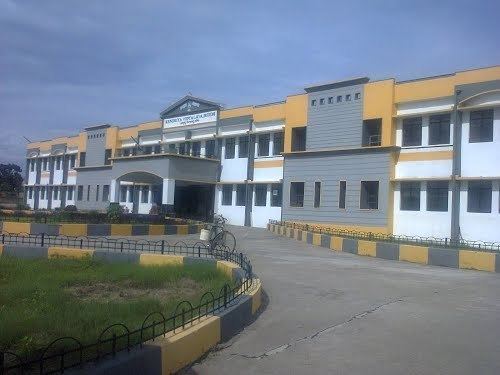District Boudh Vehicle registration OD-27 Population 20,424 (2011) | Time zone IST (UTC+5:30) Website boudh.nic.in Local time Friday 6:43 AM | |
 | ||
Weather 22°C, Wind SE at 2 km/h, 51% Humidity | ||
Boudh(Odia: ବୌଦ୍ଧ)(also known as Baudhgada) is a town and a notified area committee in Boudh district in the state of Odisha, India. It is the district headquarters of Boudh district. It is located on the bank of Mahanadi, the largest river of the state of Odisha.
Contents
- Map of Baudhgarh Odisha 762014
- History
- Geography
- Demographics
- Politics
- Education
- Places of interest
- References
Map of Baudhgarh, Odisha 762014
History
Boudh was made the headquarters of the new district by the then Chief Minister Biju Pattanaik, during whose tenure the old Phulbani district was split in January 1994. The early history of Boudh is still in obscurity. However, the discovery of remarkable Buddhist statues from Boudh led some scholars to believe that Boudh was an important Buddhist centre of Odisha. From the epigraphic records it is known that in the middle of Eighth Century AD., Boudh region was under the occupation of the Bhanja rulers and was a part of Khinjali Mandala. The earliest known ruler of this Bhanja family was Nettabhanja who was ruling over the Dhenkanal region as independent ruler, but his successor migrated towards Boudh-Sonepur region and established Khinjali Mandala and ruled there as the feudatory of the Bhauma Karas of Tosali. The Sonepur Copper Plate of Satrubhanja Dev, son of Silabhanja mentions the name Khinjali Mandala for the first time and on this basis it is believed that Silabhanja Dev was the founder of Bhanja Kula of Khinjali Mandala. Their capital was Dhirtipura, which has been identified with Boudh town. Satrubhanja Dev – II, a ruler of this family was defeated and killed by the Somavansi ruler of South Kosala, Janmeyjaya – I. The Bhanja’s were driven out from the Boudh region which was renamed as Odra Desa. Yayati – I, the son and successor of Janmejaya – I established his capital in Odradesa at Yayatinagara, which has been identified with modern Jagati in Boudh District. The Somavansi then occupied and migrated towards Utkala leaving their original home land South-Kosala in charge of viceroys. In course of time Kosala was lost to them and was occupied by the Telugu-Chodas and the Kalachuris. The imperial Gangas of Kalinga, after their occupation of Utkala, entered into a protracted struggle with the Kalachuris for one hundred years for the occupation of Kosala region. It is evident from the Chatesvar Inscription ( 1220 AD) that the struggle finally ended in favour of the Gangas during the region of Anangabhima Deva – III and thereafter Boudh along with Sonepur came under the Ganga Rule and was administered by the Ganga Administrators. In course of time, the Ganga Administrators became semi-independent and ruled over this territory hereditarily. So far tradition goes, there emerged a Brahmin ruling family in Boudh. Gandhamardan Dev, the last Brahmin ruler of this family, being childless adopted one Ananga Bhanja of Keonjhar Bhanja royal family. He succeeded Gandharmardhan Dev and laid the foundation of the rule of the Bhanjas in Boudh in the first half of fourteenth century AD. He changed his surname from Bhanja to Dev and was known as Ananga Dev. Since then, the new line of kings continued to rule over this region till the merger of Boudh State with the Odisha province in 1948. Their kingdom comprised modern Athmallik, Boudh and Sonepur regions with its capital headquarters at Swarnapura ( Sonepur). But later on due to the expansionist policy followed by the Chouhan rulers of Patna ( Patnagarh in Bolangir District ) they shifted their capital to Boudh.
Geography
Boudh is located at 20.84°N 84.32°E / 20.84; 84.32.
Demographics
As of 2011 India census, Baudhgarh had a population of 20,424. Males constitute 52% of the population and females 48%. Baudhgarh has an average literacy rate of 72%, higher than the national average of 59.5%; with 58% of the males and 42% of females literate. 12% of the population is under 6 years of age.
The population of the district is 373,000. Most of the population engage in agriculture, and are thus vulnerable to periods of drought and hunger; the region is among the poorest in Odisha.
Politics
Current MLA from Boudh Assembly Constituency is Pradip Kumar Amat, also Speaker in State Legislative Assembly Odisha. he who won the seat in State elections of 2009, 2004 and also in 2000 as an independent candidate. Previous MLAs from this seat include Sachidananda Dalal of JD who won this seat in 1995 and 1990, Sujit Kumar Padhi of INC in 1985, Himanshu Sekhar Pandhi of INC(I) in 1980, and Natabar Pradhan of JNP in 1977.
Boudh is part of Phulbani (Lok Sabha constituency).
